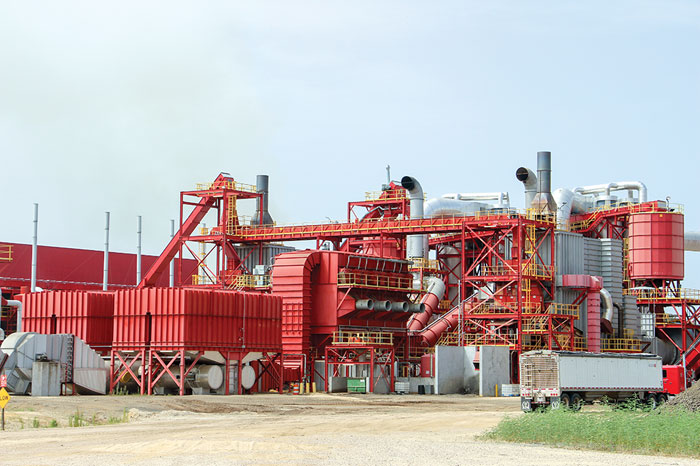When opportunity knocked to add a third industrial wood pellet plant to its portfolio smack in the middle of its other well-performing two plants within regional shipping distance of its port operation, Baton Rouge Transit, at the Port of Baton Rouge, and only a short drive from its new North American headquarters in Monroe, it seemed like a no-brainer for Drax Biomass.
Senior Director of Operations Richard Lamb acknowledges that purchasing a plant from a bankruptcy broker meant taking on a little faith. But he adds, “We knew what we were buying,” and he notes that the former German Pellets plant was designed a little differently and there were “one-offs,” which Drax personnel weren’t sure were positives or negatives.
The previous owner had constructed and started up the plant in mid-2015, but encountered operational problems, as well as financial, and declared bankruptcy in February 2016. Drax Biomass purchased it at bankruptcy auction in April 2017 and re-named the operation, LaSalle BioEnergy.
The site is a wide footprint that was originally designed for two mirror image pellet plants with a capacity of nearly 1 million tons. While plant one was mostly completed, plant two had a lot of foundation work and conduit on the ground.
Drax came in and redid all the power lines in the facility and all the aluminum cables going to the breakers because it was all undersized, creating operational obstacles for the team.

“If I had to guess on our largest restructuring activity,” Lamb notes, “I would have to say either the concrete work we had to do that wasn’t finished or the cabling we had to run. All the cables in the facility are brand new. We even ran cables overhead where the underground cables were.”
Another major issue was the communication and programming problem between the machines and the control room—a nightmare actually.
Lamb smiles as he recalls the first time an alarm went off inside the control room: “It sounded like a fire truck was behind you. The first time it went off, I was looking for a fire extinguisher.”
Drax ultimately decided to hire a programmer and started going through the programs making changes.
“We did have to buy a few programs, but since then, we’ve retrofitted the systems to where we’re not dependent upon others,” he adds. Focus now in the control room is on taking items off the screens and setting up soft tabs instead. Lamb believes this will give the control room the visibility it needs without getting bogged down by having every single detail on screen.
And then there was the reputation of the plant, which had suffered in the local community and certainly in the vendor sector. “We sat down with vendors face to face and told them we do what we say we’re going to do,” Lamb recalls. “Give us an opportunity to show you what we’re capable of doing. Most of them gave us an opportunity and today I can tell you we don’t have an issue with anyone.”
One thing that won’t change in the near future is the bright red color that German Pellets painted the mill. There are too many other things on the Drax plate at Urania at the moment, and the cost to change the color to Drax blue is not insignificant. “It’s so red though,” Lamb laughs.
In November 2017 LaSalle BioEnergy started producing some pellets, mainly to verify the process capabilities. Once the plant hit February and March, production gained momentum.
Today, though the plant is technically still in a semi-commissioning phase, Lamb is thrilled with production numbers. Production took off so quickly, LaSalle started making more pellets than the facility could logistically handle. Until a rail spur project is completed early next year, pellets are trucked to Baton Rouge. Another trucking company had to be brought in to handle the increased volume. Lamb credits the LaSalle team, especially Plant Manager Mufaddal “Mufi” Noorbhaiwala and Operations Manager Cody Davis, for driving the success.